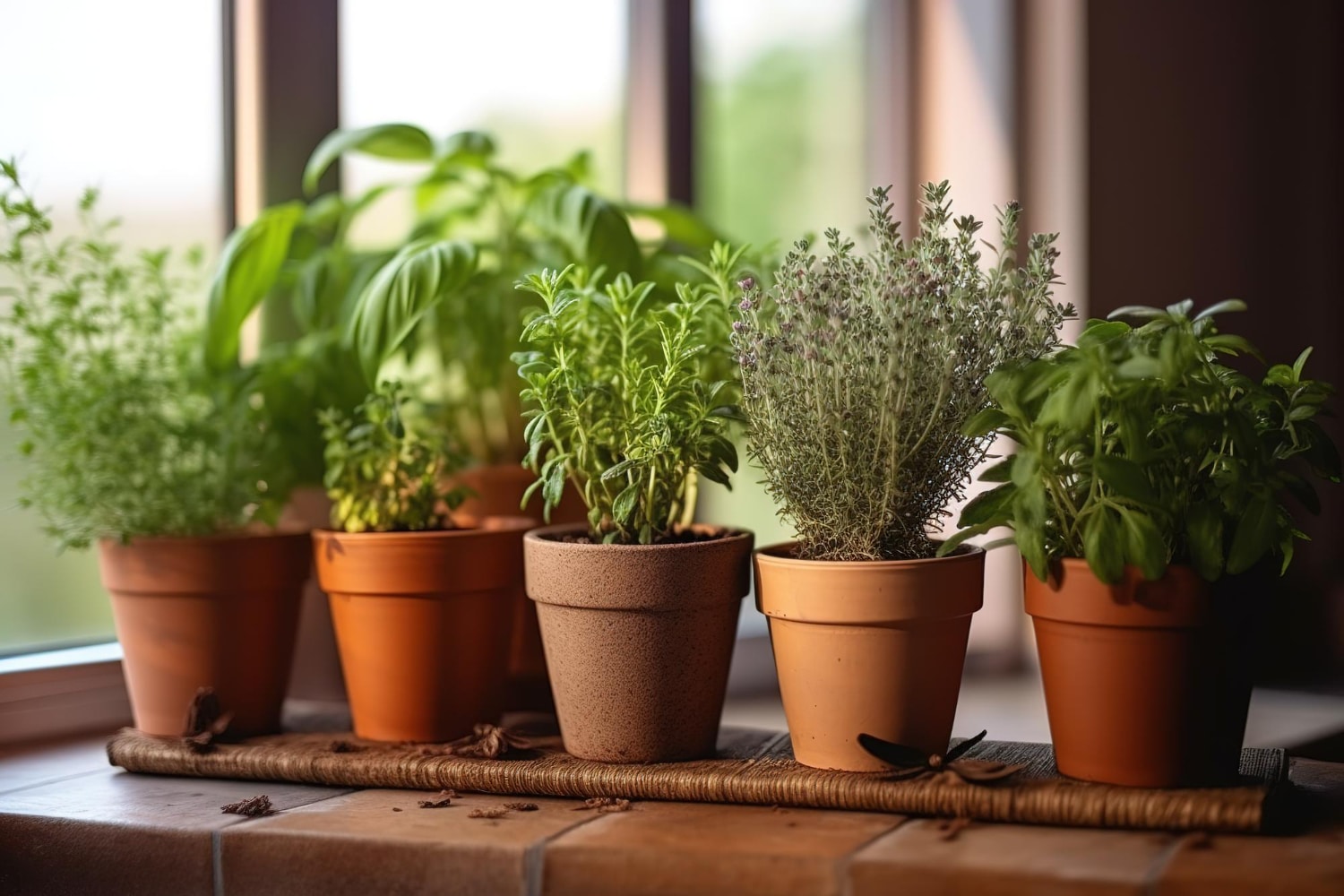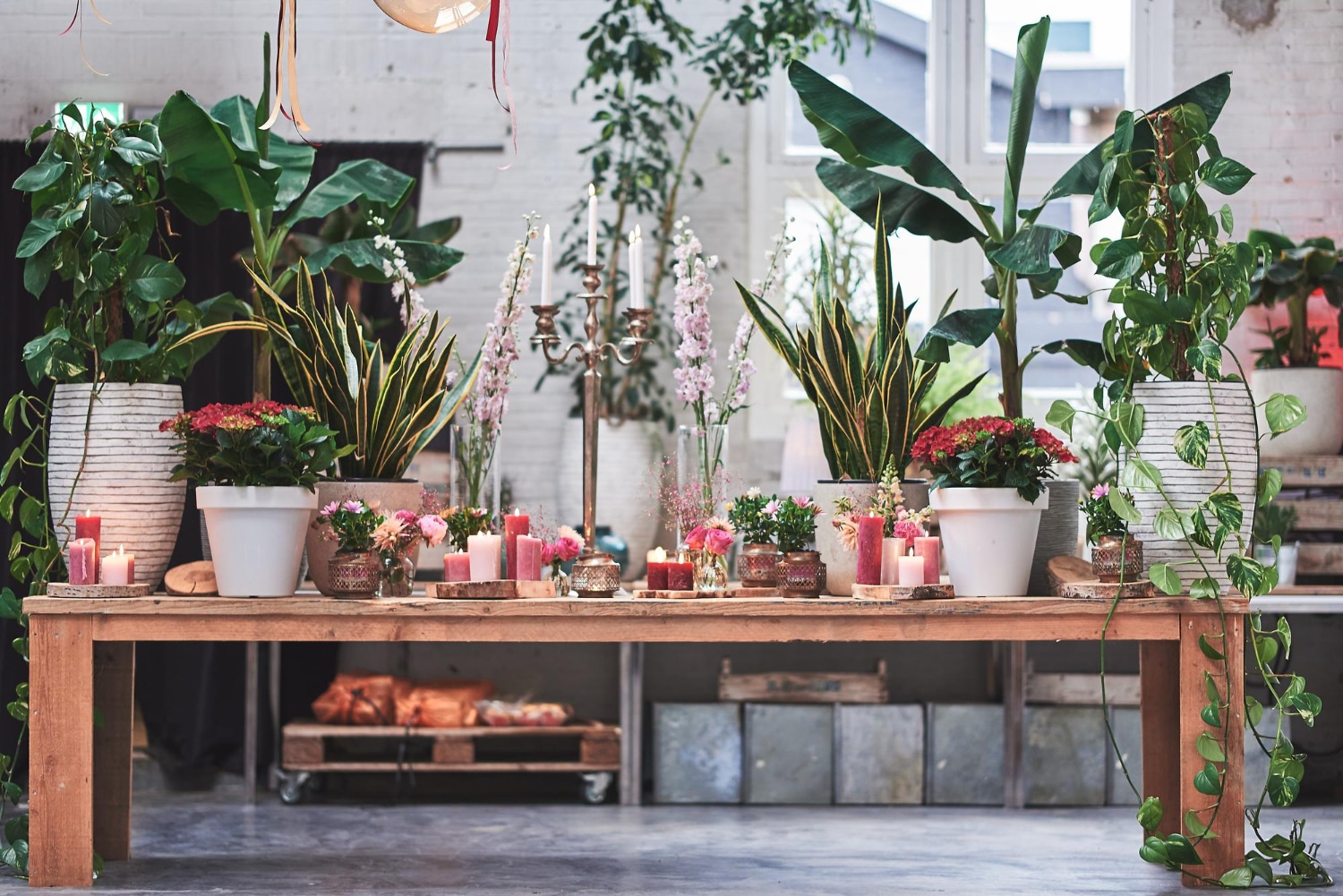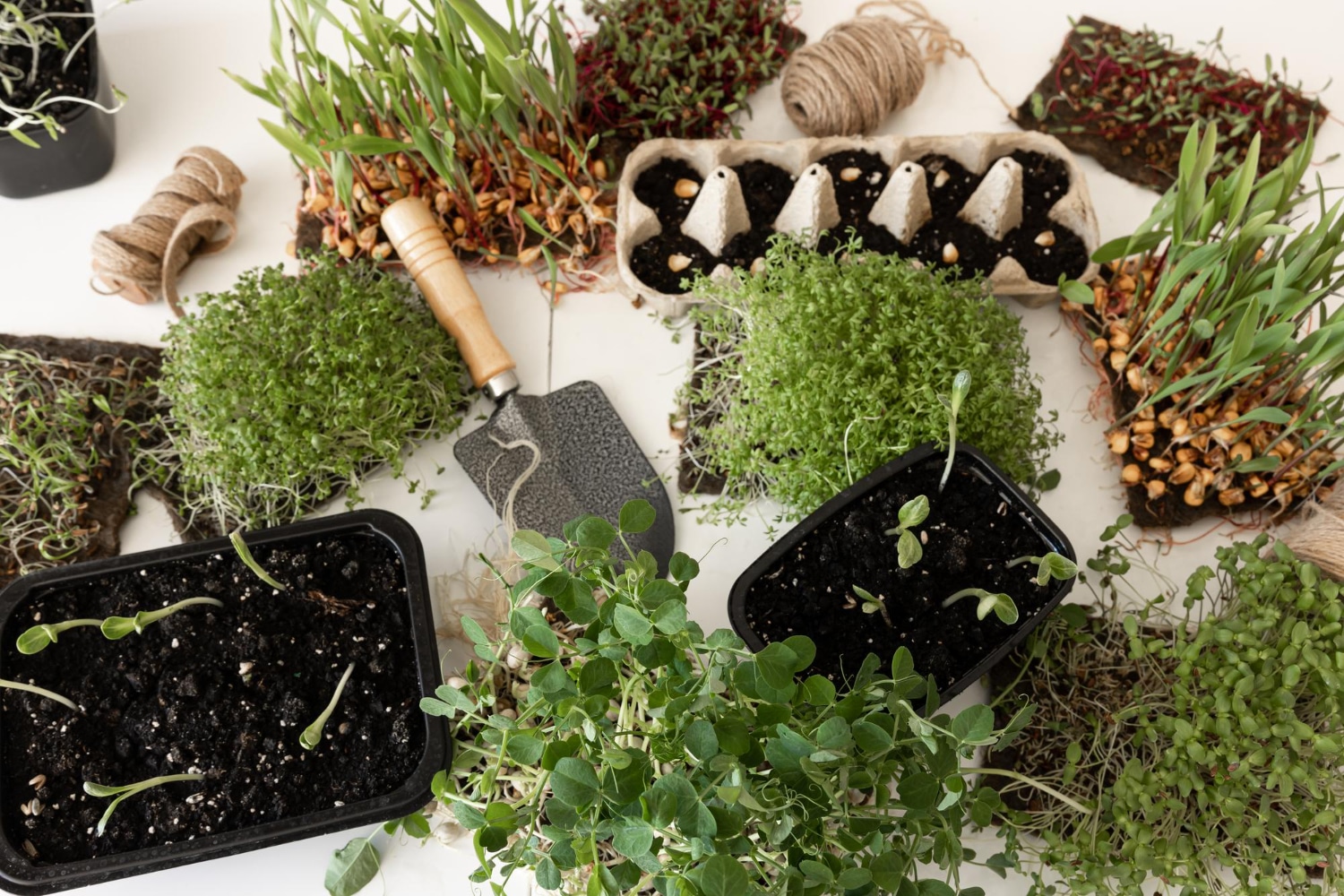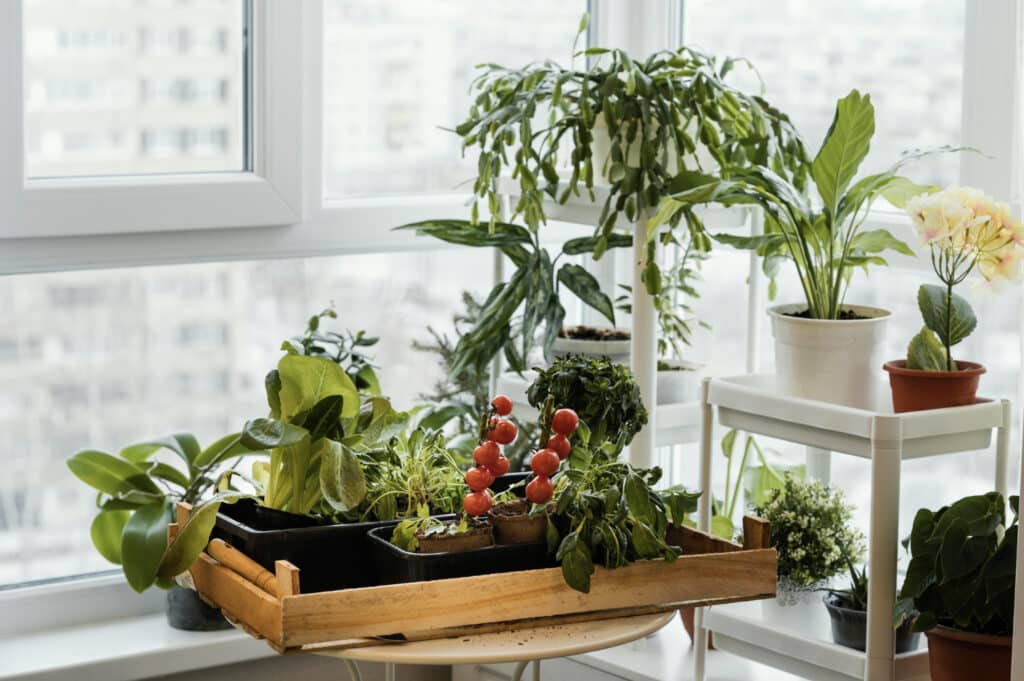Growing your kitchen herbs garden indoor is beneficial in a lot of ways. It’s a joyful hobby and a practical solution to getting organic herbs in a very cost-effective way. You can grow your herbs garden in any home setting, even if you have an apartment. Imagine fresh organic herbs, right from the plants to your cooking pot. The feeling is priceless and if you love gardening, it doubles the fun!
Today we will discuss everything that will help you set up your own herbs garden indoor.
Choosing The Best Herbs for Your Indoor Garden
Before you set up your garden you must make a list of all the right herbs that you can grow indoors. This way you can have better production and a bountiful harvest. Some herbs that grow best indoors are

Basil
We all know the health benefits of Basil and it can sometimes be costly to buy it from supermarkets. It gives a distinct aroma and taste to dishes and is mostly used in Italian cuisine.
To grow Basil in your indoor herb garden, you just need a place near the window. Basil plants need sunlight for up to 8 hours a day so if you plant them near the window, voila! They don’t need extra water, just enough to keep the soil moist.
You can use fresh basil leaves and flowers to make your dishes savoury. Both Basil leaves and flowers can be dried for a longer shelf life. If you pluck flowers from the plant, it will encourage more leaf growth.
Mint
Mint is very refreshing and is used all over the world to enhance the taste and aroma of cuisine. It’s also used in drinks, teas and as garnishing on cuisines.
You can grow mint in your balcony because it needs direct sunlight. You need to water the mint but avoid over-watering. It grows best in humid conditions and when done right, it overgrows in pot so keep trimming the plant. With mint in your herbs garden, you can have unlimited supply in a very short time.
Thyme
Thyme is best for soups, roasts and stews. It pairs well with meat-based dishes. Thyme needs 6 hours of sunlight so southfacing windows are best for thyme production. Thyme can thrive in less water too but make sure you don’t let it dry for long periods.
Between the two waters, let the soil dry first. Keep trimming the plant to avoid getting it dry and encourage new leaf growth.

Oregano
Oregano is another beneficial herb to be planted in indoor herb gardens. It is used in Mexican cuisine and is known for its strong flavour. You can plant oregano near your window to ensure it thrives. Oregano needs care with watering as over-watering can rot the plant. Regularly trim your plant so it can have maximum leaf growth.
Chives
Chives are used in salads and soups. You can plant them in the shade too because they need 4 hours of sunlight to grow. Water when the soil feels dry and trim to grow more leaves. They can grow well in small indoor pots too.
Parsley
Parsley has a very distinctive flavour and is used in soups, cooking and garnishing. You can grow parsley under shade too. It just needs normal water intake and to harvest parsley, you keep picking the outer leaves so the inner leaves can keep growing.
Rosemary
Rosemary has a strong piney flavour and is loved by chefs for its aroma and distinctive taste. They usually use it while making bread and roasted dishes.
You can grow rosemary in a south-facing pot. Rosemary grows well in drier conditions so make sure you never overwater it. Giving more water can kill the plant.
Cilantro
Cilantro is a citrusy-flavoured herb and is used in Mexican and Asian cuisines. You can grow cilantro in the shade and keep the soil moist so this herb can thrive. Cilantro grows well so you can have a lot of harvest in a short time. You can frequently trim and use it.
All these herbs are best for your indoor herb garden. You can plant them with ease and they don’t require very much effort.
Selecting the Right Containers And Style For Your Herbs Garden Indoor

You must choose the right pot for your herbs garden so they can thrive well. A good herb planter will significantly increase your harvest and keep your plant healthy and happy.
- If you are choosing individual pots, they can give you control over your herb growing conditions as herbs need different lights, temperatures and water quantity.
- Long Planter boxes are best if you are planning to grow plenty of herbs and they can easily be placed on countertops and windowsills.
- Hanging plants are the best decorative items and they save a lot of space. You can also make a herb wall with small pots all over the wall.
- For herb plantations, use pots that have the right drainage system because most herbs rot with over-watering. Also, don’t use garden soil as it can contain pests and insects that may not be good for plants.
- Use good quality seeds and plant them after reading proper instructions.
- Feed your herbs with a water-soluble fertilizer every month. You can make fertilizers at home too, using banana peels and egg shells.
- Start harvesting when the plant is mature. Use very sharp scissors. Avoid cutting Basil and parsley from the bottom, while cutting chives close to the base.
Some Common Problems For Indoor Herbs Garden
While planting your herbs garden indoor is very easy, a few problems can still arise and here is how you can treat them.
- If your plants are going yellow, it means you are overwatering them. Make holes in your pot to drain excessive water.
- Not enough light can mess with plants’ growth. Either feed your plant supplements or move them to a more sunnier spot.
- Use Neem oil to treat pests in indoor plants.
Maximizing Your Indoor Herbs Garden

To maximize your harvest, here is what you can do
- The whole idea of an indoor herbs garden is making the best use of space within a limited place. You can
- Do companion planting as certain herbs grow well when planted with other veggies. For example, basil and tomatoes grow well together. Mint pairs well with the cabbage family plant and Thyme and rosemary thrive better in each other’s company.
- Use a vertical herb garden to save space. You will need wooden pallets and hanging planters for a vertical herb garden. Install a vertical herb garden on a wall that has good light exposure. Use a drip irrigation system for easy watering.
- Windowsill Herb gardens are easy to plant and take care of. Use pots and fill them with your favourite herb. Rotate plants regularly so each side can have equal light exposure.
- Indoor hanging herbs gardens look cool and save a lot of space. You need hanging pots and wall-mounted shelves for hanging gardens. Use lightweight pots for hanging gardens.
- Mason Jar Herb Garden gives a stylish look to your indoor setting. You can arrange mason jars on wooden shelves or even kitchen counter.
- Herb Terrarium creates a mini greenhouse effect for herbs that thrive in humid environments. Use Glass terrarium containers, potting soil, and plant herbs like mint or parsley. Plant herbs inside the terrarium, ensuring there is enough space for growth and air circulation. Keep the terrarium in a bright location but out of direct sunlight to prevent overheating.
- Give new life to old containers by repurposing them as herb planters. Use tin cans, teacups, wooden crates, or any other creative containers. You can make DIY containers too. Add labels for a personal touch.
- Indoor Hydroponic Herb Garden can grow herbs without soil.
- A tiered garden tower maximizes vertical space and allows you to grow multiple herbs in one compact unit.
All want for you is the best indoor herbs garden where you can grow your own herbs and enjoy delicious food. Happy gardening!


